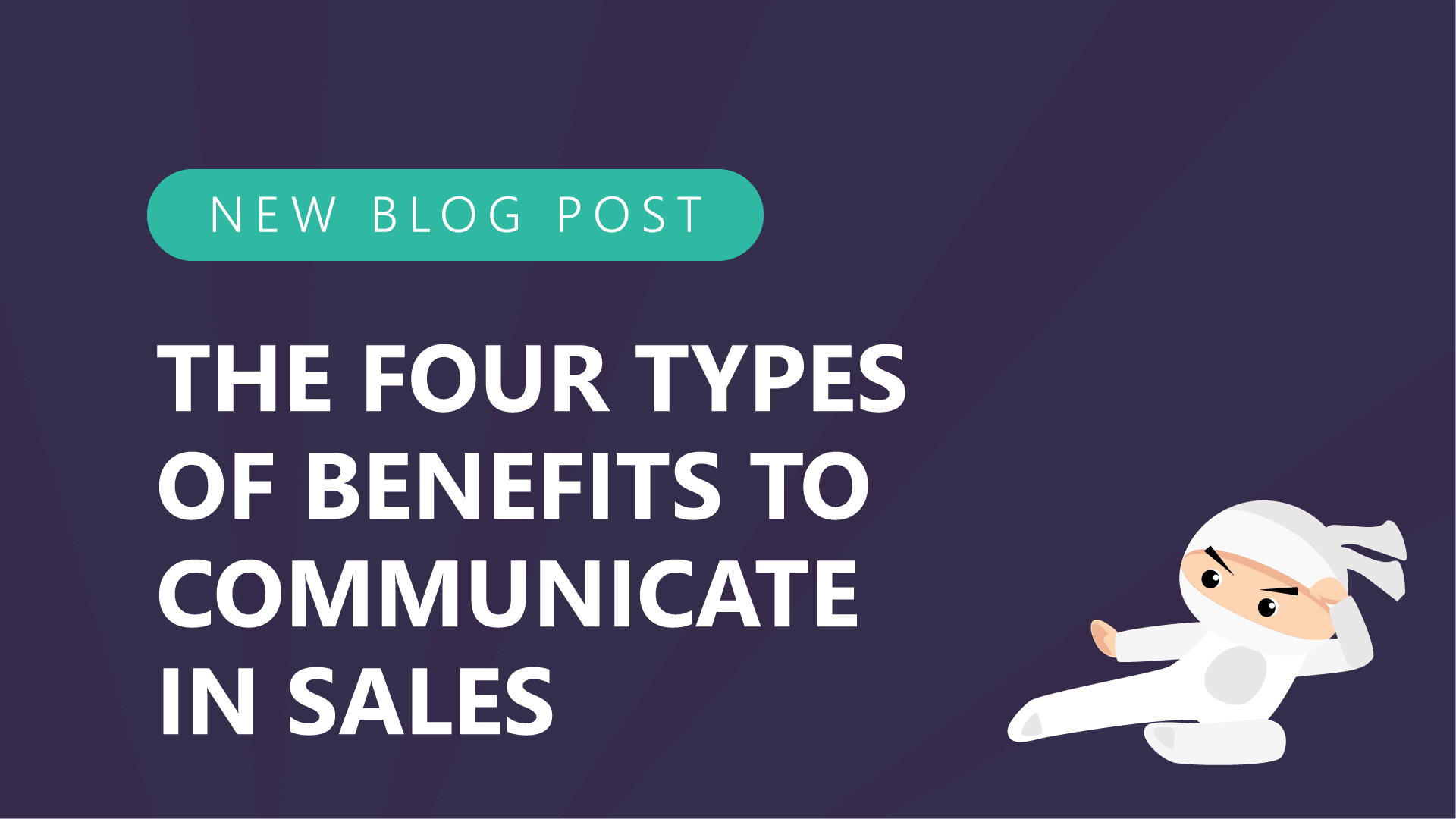Ian Campbell is the CEO at Nucleus Research, an “Investigative technology research firm that uses a return on investment, case study approach to assess the value of technology.” They focus on whether or not something delivers value.
In episode #427 of Negotiations Ninja, Ian talks about how to weave value into the sales funnel so that prospects are propelling themselves forward. But to get to that point, you need to understand the four types of benefits and which ones are worth communicating to your customer.
Translating benefit(s) to ROI
A benefit is something that you’re going to get. A good benefit is making your team more productive. Another benefit is making your team more agile. But what does that mean? Benefits are either direct or indirect, and there are four types.
Type #1: First-order benefits
A first-order benefit is something that will absolutely happen. “If you buy my product, you’ll no longer need to maintain a server for the software.” You’ll cut the maintenance costs. This will be seen as a good benefit by the CEO or decision-maker. It’s a no-brainer that you want to communicate this value to your prospect.
Type #2: Second-order benefits
A second-order benefit is something that you think could happen or you intend to happen but may not always come to fruition. If your daughter says, “I cleaned my room,” you believe it, right? But if she says, “I intend to clean my room,” you may or may not believe it will happen. Believability decreases slightly.
Type #3: Third-order benefits
A third-order benefit is productivity gained in some way. Everyone has a cell phone. If they’re asked if they’re more productive with a mobile phone, they might be inclined to say yes. But how much more productive? Everyone has a different feeling.
As the salesperson, you could say, “Do you think you’re at least 3% more productive?” They’ll likely say yes. But they may say “no” when you ask if they’re 5% more productive. That shows you where they are on the bell curve.
In sales, you aren’t trying to build the perfect business case—you’re trying to close the deal. Going for big numbers will kill you. Go for what’s believable.
Type #4: Fourth-order benefits
A fourth-order benefit is something that’s less believable. It’s where you say something like “Giving my salespeople new software will make them more productive, which will make them happier. Because they’re happier, there’s going to be less turnover in my company. Because I have less turnover, I’ll reduce my hiring costs.” There are too many variables and too many steps between the action and the result.
It’s like saying, “I’m going to sell you an acorn. You can grow a tree. Then you can use the lumber to build a house.” But you could also get firewood, a sailboat, or numerous other things. The long-drawn-out story becomes unbelievable. This framework will help you realize there are “bad” benefits that you don’t want to talk about.
Focus on what matters
There are only one or two benefits that drive a deal. There may be 2–3 things that support the sale. If you’re talking about more than five things, you’ll likely just confuse the customer. Focus on one or two things that really matter. Get the customer to understand the value of those benefits and build a business case if you have to.
Learn more about building value into the sales funnel in episode #427 of the Negotiations Ninja podcast!

